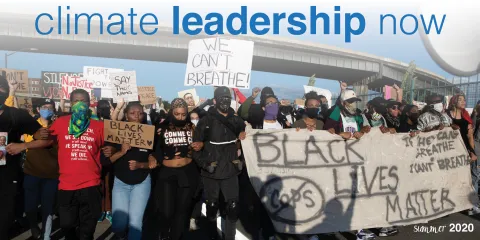

Can this moment, when we are in the grip of a pandemic and forced to grapple with the issue of deep racial disparities, be a moment of renewal for our community and the world? The answer to that question is still being written, but it seems clear that something has shifted.
So much has changed in the past few months. The way we work and socialize, how we can worship, and even the urgency with which we approach our civic responsibilities have all been changed by a combination of the COIVD-19 pandemic and calls for racial justice in street protests throughout the country prompted by the murder of George Floyd. The question now is if that change can be harnessed to build a more just and sustainable society.
It is clear that the same racial disparities that influence how the impacts of the climate crisis are felt, hitting communities of color first and worst, are also playing out in the pandemic. People of color are more likely to be infected and die from COVID-19 compared to the white population, the same way that communities of color continue to be much likelier to live in hotter areas of the city and breathe in more polluted air. But we can’t understand a crisis without first understanding its root cause. And look for the root of nearly any crisis in America, and you’ll find a system of racist practices and policies that ultimately lead to disproportionate harm to communities of color. That’s true for how historic and structural inequities place people of color at greater risk for the most serious effects of our current COVID-19 crisis, and it is true for the climate crisis.
To solve complex, multi-dimensional problems, we must come to the table with comprehensive, multi-dimensional solutions. We can no longer hope that technocratic solutions aimed at reducing carbon emissions will solve the climate crisis without also addressing the underlying injustices in our community. We can’t solve the climate crisis without also addressing institutional racism — there is no climate justice without racial justice. As long as our systems fail to recognize and protect the full humanity of people of color, we will fall short of doing what needs to be done in order to protect the future livability of our planet.
In my winter letter, I talked about the plan for a “Green New Deal” that would bring together economic renewal, racial and social justice, and strategies to reduce greenhouse gas emissions. Those kinds of bold solutions seem more possible now in a time when our country is looking for ways to not only combat COVID-19, but also recover from an economic crisis, deal with systemic racism, and address the ongoing and ever-worsening threat of the climate crisis. Locally, with the completion of the 2015 Climate Action Plan Final Report, we are renewing the way that we look at climate planning and focusing on climate justice and frontline voices. Uncertainty and anxiety are ever-present in these difficult times, but the ways in which we react and come together will have big impacts on how we emerge from this moment. I believe that we can emerge stronger and more ready than ever before to make a better future for all of us.
- John Wasiutynski, Office of Sustainability Director

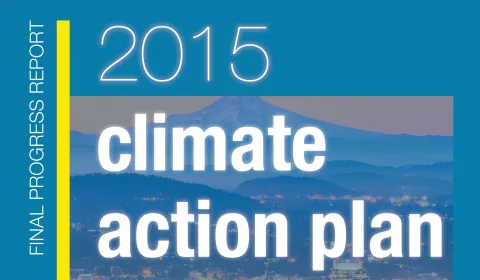

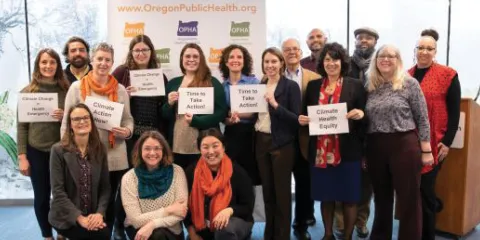
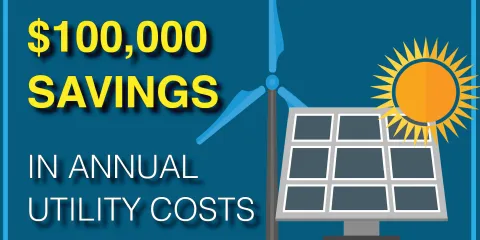
Multnomah County saves $100,000 in annual utility costs: Multnomah County saved 467,000 kilowatt hours of electricity and 66,000 therms of natural gas, roughly equating to $100,000 in annual utility savings. (Climate Action Plan, Action 19B)
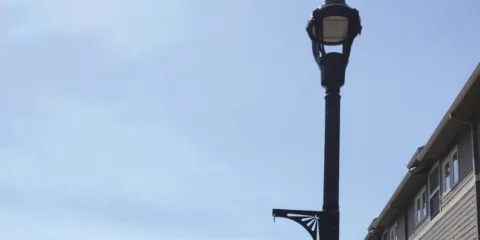
Mid-County Lighting District wins the 2020 Employee Recognition Award for Sustainability: Over the last few years, the District has collaborated very closely with the communities of Maywood Park, Fairview and Troutdale and replaced all their street lights with ones that are brighter, easier to maintain and more energy efficient. (Climate Action Plan, Action 19E)


Sesame Street's Abby Cadabby shares a story about how her fellow Sesame Street friend Big Bird was a victim of prejudice, and how she stood up for him.
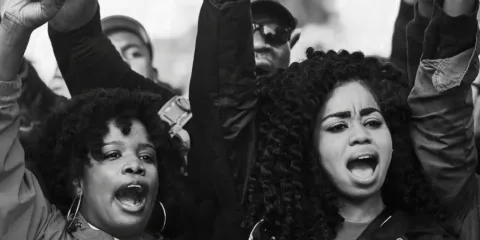
What Is Owed? "If true justice and equality are ever to be achieved in the United States, the country must finally take seriously what it owes black Americans."

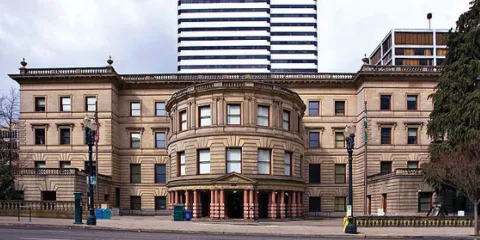
Portland declares a climate emergency: The council unanimously passed a resolution declaring the city - along with the rest of the globe - is confronting a crisis.
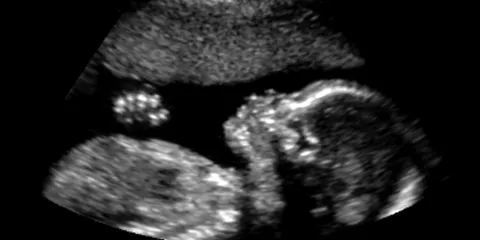
Climate Change Tied to Pregnancy Risks, Affecting Black Mothers Most: Pregnant women exposed to high temperatures or air pollution are more likely to have children who are premature, underweight or stillborn, and African-American mothers and babies are harmed at a much higher rate than the population at large.
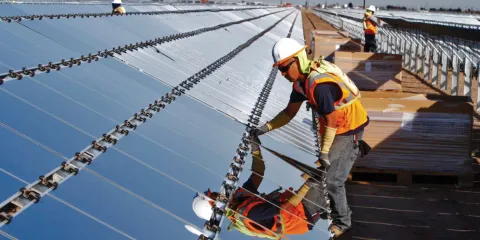
House Democrats just put out the most detailed climate plan in US political history: A new select committee report is perfectly in tune with the growing climate policy alignment on the left around standards, investments, and justice.
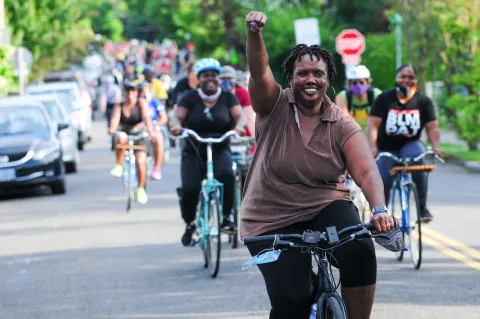
Last night we all rode together thanks to Black Girls Do Bike: After months of quarantine and weeks of heavy-hearted news and protests, Nichole Watson and Keyonda McQuarters just wanted to let loose and go on a bike ride. They told their friends to join and expected a few dozen people. What they got was closer to 2,000.

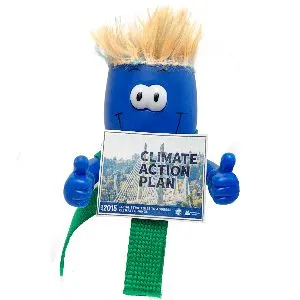
Email your burning climate change-related questions to CAPPY, the Climate Action Plan mascot, at sustainability@multco.us, and it may appear in next quarter's Climate Leadership Now newsletter!
Q: Dear CAPPY, How is systemic racism linked to the COVID-19 pandemic?
A: There is no doubt, Black, Latinx, Native American and other people of color are much more likely to contract and die from COVID-19. A recent analysis of the Center for Disease Control’s data by the NY Times showed that Black and Latinx people are about 3 times as likely as white people to contract the COVID-19.
In general people with pre-existing conditions are more likely to die from COVID-19. African Americans, Hispanic/LatinX Americans, and Indigenous/Native Americans suffer disproportionately from chronic diseases such as hypertension, cardiovascular disease, diabetes, lung disease, obesity, and asthma, which make it harder for them to survive COVID-19.
The social determinants of health, things that make you more or less healthy but are usually outside your direct control, are dramatically impacted by race. Communities of color are more likely to live in areas with high levels of air pollution, with less access to transit and green space, in lower quality housing that exposes people to more environmental toxins, not to mention over policing leading to higher rates of incarceration, less access to job opportunities and ability to build wealth, less access to health care, and higher likelihood of working in industries where the work can’t be done remotely leading to increased risk of exposure, and a host of other issues that at the root have racist institutional policies as a cause. These factors have made these three groups suffer more from these pre-existing conditions which in turn are further exacerbated by COVID-19.
Learn about how people of color across the country, and in Multnomah County, shoulder a disproportionate burden of illness and death from COVID-19.Yours truly,
CAPPY
